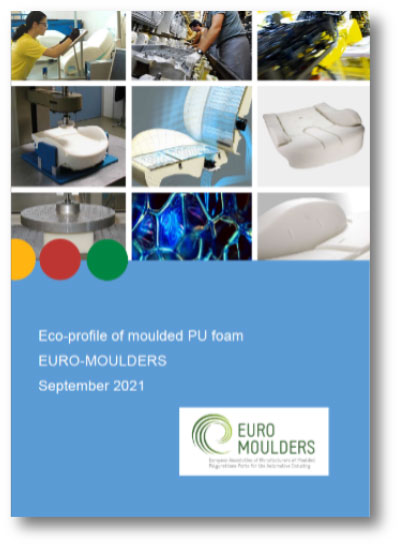Over 80% of the lifecycle energy of a car is derived from fuel consumption during its lifetime. This means that the first priority must be to reduce fuel consumption and to lower emissions.
Polyurethanes support that objective because they are lightweight.
But all products at some point reach the end of their working lives and so does your car.
END OF LIFE SOLUTIONS
In the European Union, all vehicles reaching their end-of-life stage are subject to the stringent rules set by the ELV Directive (2000/53/EC).
This directive sets mandatory recycling targets for ELVs and over time has banned the use of certain substances in cars. More information on the ELV in general is available on the European Commission’s website.
A typical car contains around ~25kg of polyurethanes, of which around 10-15 kg is polyurethane foam used in car seats.
There is a way to go in recycling polyurethanes from automobiles that will require a reflection on parts design, collection and dismantling. However, if polyurethanes are separately collected and properly dismantled, they can be recycled through a range of different methods:
For materials that are contaminated energy recovery remains the best option. Energy recovery is the process of recovering the fossil fuel energy contained in polymers through direct incineration with or without other waste materials. The recovered energy is used to provide heat or electricity to industry and homes. Polyurethanes have a recoverable energy value comparable to that of coal.
- Mechanical recycling: Production cut-offs + EoL from are transformed into so called trim (foam flocks) which in turn can become rebounded foam used in numerous applications.
- Depolymerisation: A process whereby flexible polyurethane foam is broken down into its specific constituent chemical raw materials, which can be used again to make fresh foam. There are several technologies available for the chemical recycling of PU foam – namely acidolysis, aminolysis, hydrolysis and glycolysis – differentiated by the base material they use to dissolve PU foam.
- Thermo-chemical recycling: Feedstock recycling is a technology used for recovering value from large quantities of post consumer and industrial plastics waste. Essentially, the process involves recovering hydrocarbons from mixed plastics waste and feeding them back into the petrochemical manufacturing chain as feedstock materials.
For materials that are contaminated energy recovery remains the best option. Energy recovery is the process of recovering the fossil fuel energy contained in polymers through direct incineration with or without other waste materials. The recovered energy is used to provide heat or electricity to industry and homes. Polyurethanes have a recoverable energy value comparable to that of coal.
ECOPROFILE OF FLEXIBLE FOAM
The Eco-profile of moulded Polyurethane foam (PU) provides environmental performance data representative of the average European production. The data in the documents tells you what input is required and output produced for making 1kg of moulded PU foam (cradle-to-gate).
Industry data for the production of moulded PU foam had been collected from the following companies: Adient, Faurecia, Fehrer, Proseat and Toscana Gomma.
This document has been prepared according to the Eco-profiles program and methodology and is intended to be used by a variety of stakeholders, most notably as a source of LCA (Life cycle assessment) information.



